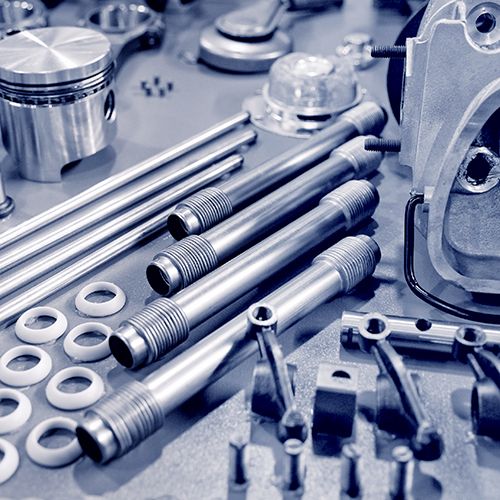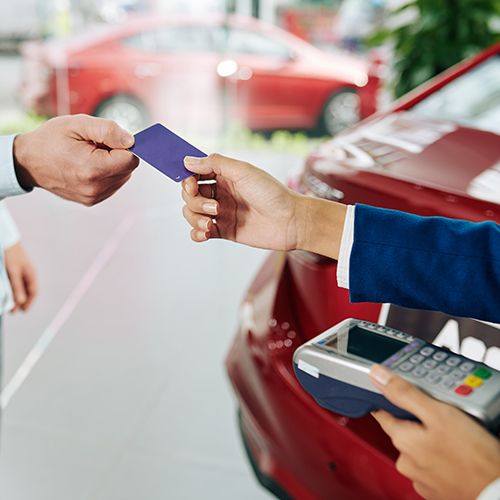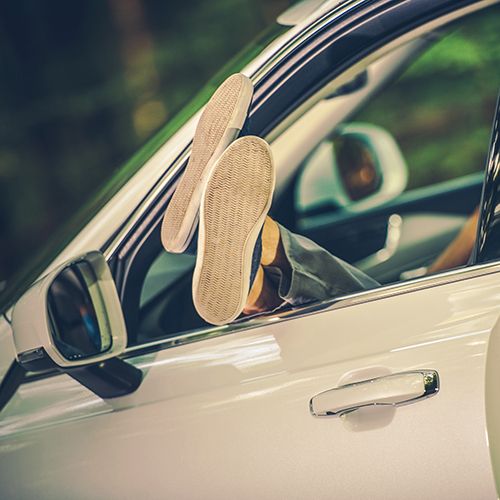21 November 2019
Stress is part and parcel of modern-day living, but you can take conscious measures to reduce it. Indulge your five senses by choosing and trying a few five-minute stress beaters, which if integrated into your life can provide long-lasting stress relief.
1. Visit, phone, hug, or kiss someone – Studies prove that strong support networks help people better handle stress and navigate rough times. Students with strong friend and family ties cope better with stress, while those receiving frequent hugs from loved ones have lower blood pressure and a deeper sense of happiness because hugging releases the pleasure hormone dopamine.
2. Take a bath with Epsom salts – Sulphate and manganese are the two main ingredients of Epsom salts and together stimulate detoxification pathways. As Epsom salts increases water’s gravity, those bathing in it feel lighter and more buoyant while also benefitting from its muscle-relaxing properties.
3. Go outside and feel the sun on your face – The sun acts as a powerfulweapon against stress and positively affects the body’s levels of serotonin (the feel-good neurotransmitter). This explains why people who get very little sun in winter feel depressed and why walking, hiking, and biking outside is particularly good exercise.
4. Dance – Dance acts as a vibrant stress reliever as the mind feels good when the body does too. Any type of physical activity releases neurotransmitter endorphins which alleviate stress. Although dancing for only five minutes provides benefits, researchers recommend a single 40-minute exercise session to effectively dispel stress.
5. Meditate – Start meditation for five to ten minutes daily to reduce stress. Further benefits include higher energy levels and diminished fatigue, increased energy, better health, improved sleep and greater disease resistance. Meditation also promotes a greater sense of calm and self-awareness, spiritual growth, a positive outlook. and a deeper sense of meaning.
6. Pet an animal – Research on the benefits of human-animal interaction is well-documented and endorses spending time with animals. When petting animals, people experience the benefits associated with increased levels of the stress-reducing hormone oxytocin and decreased production of the stress hormone cortisol. Interacting with animals helps nervous children feel more relaxed about reading aloud, lowers high blood pressure, and can increase the life expectancy of heart attack survivors.
7. Try out aromatherapy – Scents, most importantly, lavender, lemon, bergamot, ylang-ylang, clary sage and jasmine are proven stress relievers. Benefit from their soothing, stress-relieving properties by using a few drops of aromatherapy oil in the tub, place in a diffuser, light aromatherapy incense, add to your body lotion before applying or allow to evaporate off a nearby cotton wool ball.
8. Drink soothing teas– Herbal teas like chamomile are superb stress relievers due to their calming properties which promote muscle relaxation, help you unwind, and relieve pain and cramping.
9. Get a massage – Massage releases hormones like serotonin, dopamine and oxytocin, your body’s natural defence against stressand elevated cortisol levels. Massage therapy also alleviates or lessens pain. Even after only a five-minute touch massage, heart rates decrease significantly. Experience the benefits of massage by taking a trip to the spa, ask your partner to rub your back or give yourself a foot massage.
10. Enjoy yoga moves – Yoga is an excellent stress beater which helps ease physical discomfort caused by anxiety, lessens panic disorders, reduces pain, and alleviates anxious thoughts.
11. Listen to relaxing music –Musiccan slow down your heart rate and breathing, lowers your blood pressure, and triggers your muscles torelax and produces responses similar to those you experience while sleeping. Musicis the perfect preparation to promote restorative slumber.
12. Eat a piece of dark chocolate – Evidence proves that eating a piece of dark chocolateevery day reduces stress.
13. Talk it out – Talk positively to yourself and call a friend or family member to talkabout your problems. Good relationships are essential for a healthy lifestyle and even more critical when you’re stressed as a reassuring voice can help put everything into perspective.
14. Skip the junk food –Junk foods, alcohol, sugar-laden drinks, and food with high sodium and fat promote rather than reduce stress. Complex carbohydrates such as whole grains,fruits, and vegetableshelp reduce stressby inducing the brain to increase serotonin production and stabilise blood pressure.
15. Take a break from technology, especially your smartphone – Research shows that media overload like television, radio, or social networking causes sleep deprivation and is the sixth top cause of stress in the United States. As your smartphone delivers all media stressors at once, it’s best to switch it off when you’re trying to reduce your stress levels.
16. Make a Worry Box - Find a box, decorate it however you like, and keep it in a handy place. Jot down each worry as it crops up on a piece of paper and drop it into the box. Once your worry is deposited in the box, try to turn your attention to other matters thereby using your worry box to let go of your concerns. Alternatively, make a specific time to open your worry box and rethink your concern as your subconscious may have been working on your difficulty while your mind was clear, presenting you with new solutions to your problem.
17. Smile – Research shows that smiling during brief periods of anxiety helps reduce the body's stress response, regardless of whether the person feels happy or not while smiling, as smiling enables you feel the happy emotions associated with it.
18. Take a nap or go to sleep - Sleep reduces stress levels, lowers blood pressure, and may help reduce cholesterol levels which play a significant role in treating heart disease.
19. Seek out laughter – Laughter is strong medicine drawing people together in ways that trigger healthy physical and emotional changes in the body. It strengthens your immune system, boosts mood, diminishes pain, and protects you from the damaging effects of stress. Nothing works faster or more dependably to bring your mind and body back into balance than a good laugh. Humour lightens your burdens, inspires hope, connects you to others, and keeps you grounded, focused, and alert. It also helps you release anger and forgive sooner.
20. Play with children – Children havea unique way of viewing the world –interacting with them can help you enjoy their worry-free views.
21. Start a gratitude journal – Gratitude diaries help you take a step towards viewing life optimistically and gathering the courage to face and deal with your stressors. While writing your diary you may also gain a new perspective and realise certain stressors are trivial.
22. Outsource your tasks – Whether at work or home, stress mounts up as your to-do list grows. Reduce your anxiety by asking for help from a colleague, spouse, or family member to diminish the number of tasks you are responsible for.
23. Perform an act of kindness – Acts ofkindness help boost confidence, optimism and reduce stress andstudies showthat people who volunteer to help others are healthier and happier than those who don’t. If you have some spare time, consider volunteering to assist in a community event as a few hours of volunteerism keeps stress at bay.
24. Go swimming – Swimming isan inexpensive, highly effective way to beat stress and depression whether you swim in a pool or the sea. It helps boost your mood, calms the body and stimulates the braintorelease the neurochemicals thatreduce stress and help the body feel good. Additionally, the added effect of water moving over your body creates a massaging sensation which promotes relaxation.
25. Chew sugar-free gum – Studies show that chewing gum can reduce stress and cortisol in the body and help you feel more alert and less anxious.
26. Let your imagination run wild - Guided imagery techniques help with stress management and provide similar benefits to deep breathing. Sit in a quiet place in a comfortable position and allow your imagination to take you to your happy place.
27. Give a compliment - Sharing compliments with others makes you feel better about yourself and changes the way people treat you, effectively reducing tension at work and home.
28. Treat yourself – People feel special on their birthdays when receiving presents or enjoying a special meal. When you feel stressed, buy yourself a present, go out for something tasty to eat or drink, or do something that makes you feel happy.
29. Try art therapy - Art therapy helps you use self-directed art to give you down-time and the opportunity for self-care. It also provides benefits associated with using your creative side, getting in touch with your feelings, taking your mind off problems, improving performance, and enables you to tap into the state of flow, similar to meditation. When you look at your completed art, even for five minutes, it will trigger a sense of positivity and wellbeing.
30. Go for a walk - Walking, like any other cardiovascular exercise, boosts levels of endorphins which reduces stress, alleviates mild depression, improves your mood and self-esteem. Meditating while walking, even for five minutes at a time, has proven mental benefits.
Whether you are experiencing mild or severe stress, these five-minute stress beaters can help you deal with your problems in the short and long term. Get into the habit of using a few regularly as part of your lifestyle to keep yourself mentally and physically healthy.











